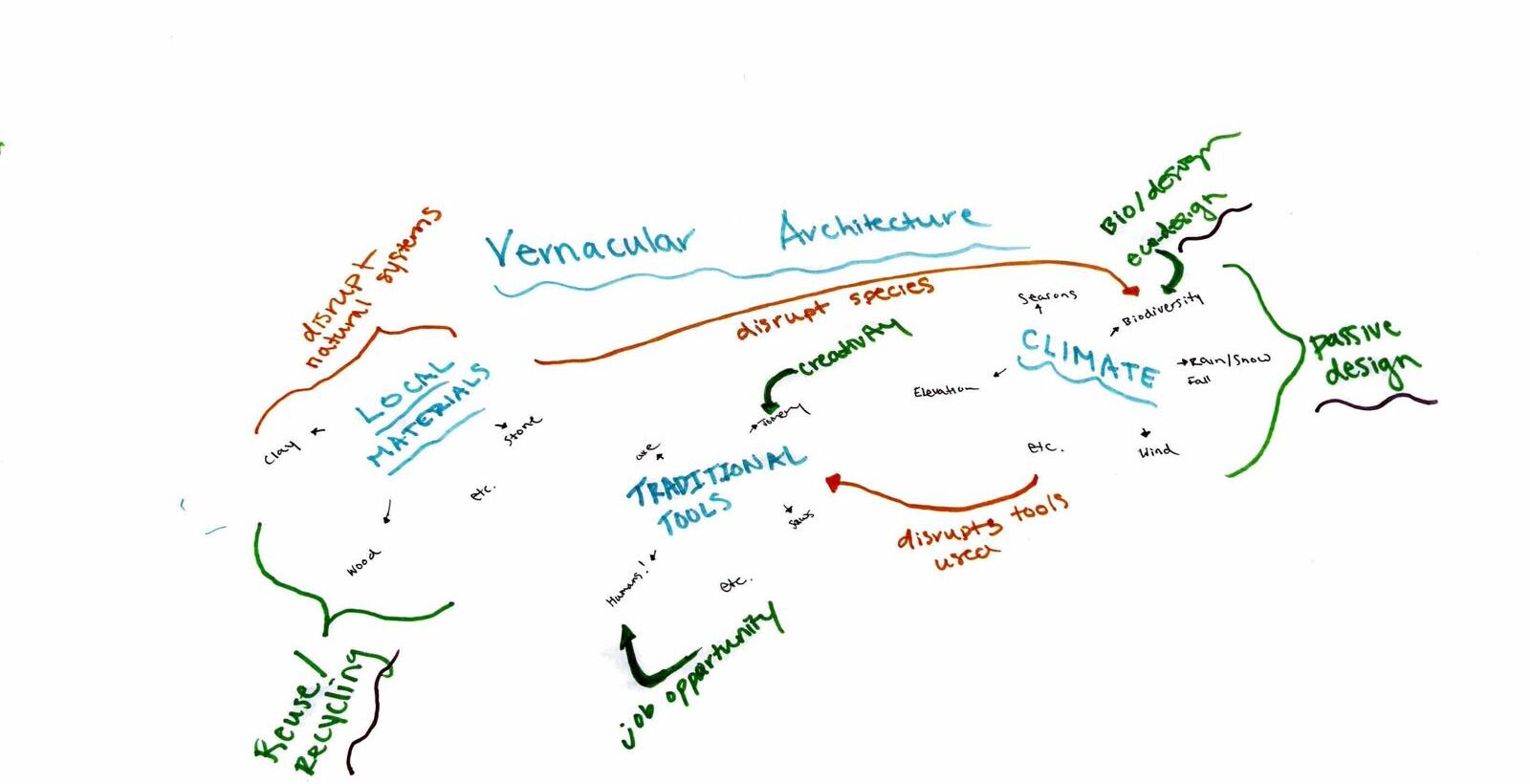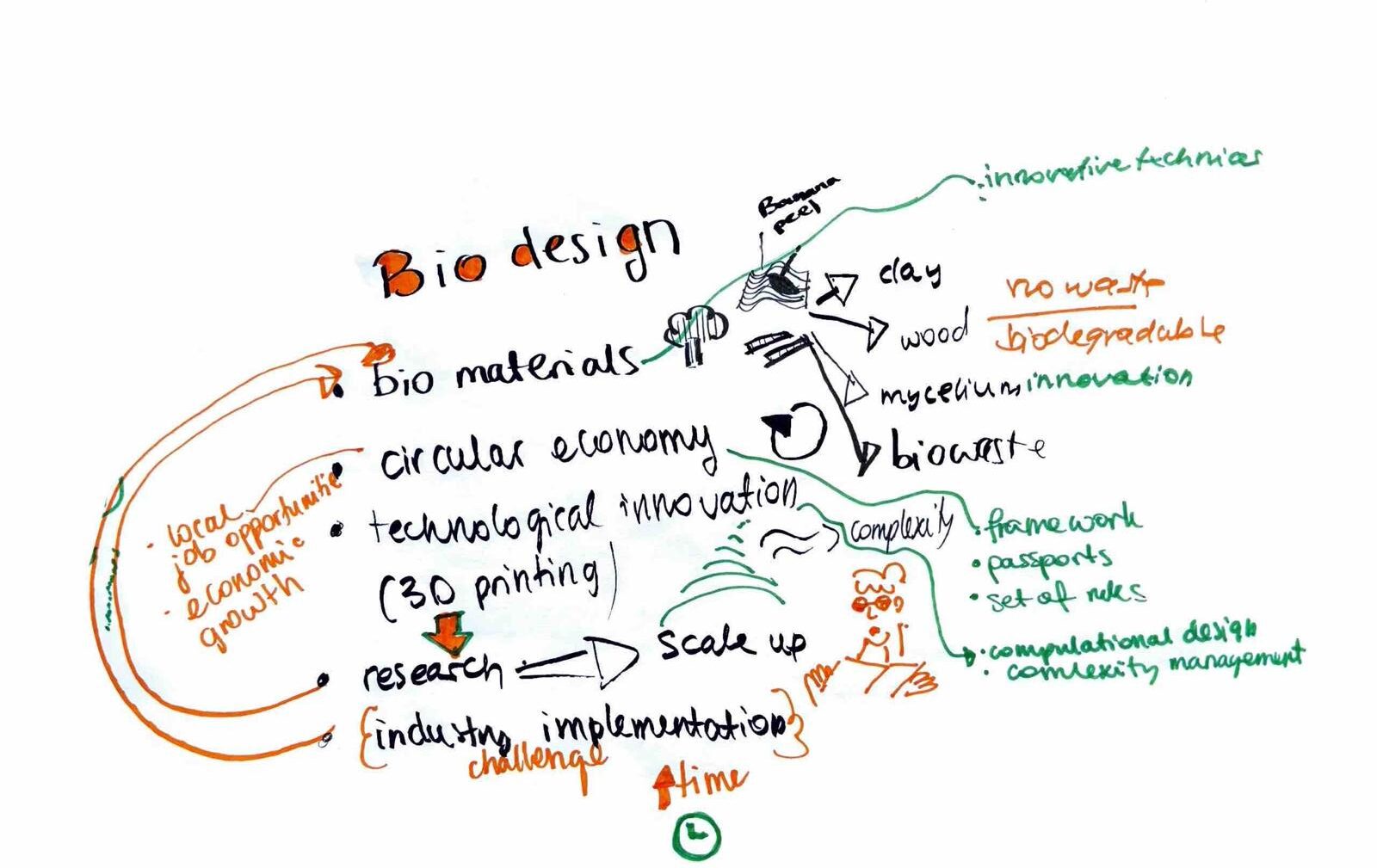For this exercise, I found vernacular architecture to be the most interesting topic to dive further into. This predominantly came from the concept that whatever other newer forms of design are trying to achieve, vernacular architecture did it first, and sometimes better. Whether it be bio-design, multi-species design, etc., vernacular architecture always holds the characteristics that these other things are trying to achieve. Vernacular architecture has a low impact, because it uses locally sourced materials, it uses passive design strategies already, and its incredibly in tune with it’s local context, which are all things other forms of environmentally conscious design try to achieve.

Some of the positives around vernacular architecture are, like mentioned earlier, that it’s already doing elements of bio-design and passive design. It’s reusing materials that are found close by so it isn’t producing more waste, it allows for a places context to show through as well, whether it be cultural or environmental, and it creates opportunities for people to learn specific trade skills that are special to a certain location. Vernacular architecture reflects the people living there. Downsides of it though, are that it doesn’t have the same technological skill that other areas of the design field do. Vernacular architecture is older and was limited to the tools of the time and people. Solutions may not have been able to of been solved to the degree that they can be now with technological advances.

One other topic covered in the course, Bio-design, has differences and similarities to Vernacular architecture. Bio-design seems to be the advanced version of vernacular, where like mentioned earlier, it has modern technologies to advance it further ahead. Due to these technologies, bio-design is something that is more easily scaled up, while vernacular is very dependent on its climate and materials. Strategies within vernacular architecture may not have the same scalability as those within bio-design because of how tied to the location they are. Similar to vernacular though, it can create local job opportunity, it attempts to be low waste or zero waste, and uses similar materials like stone, clay, brick, wood, etc. More natural materials are those that make up both bio and vernacular.

